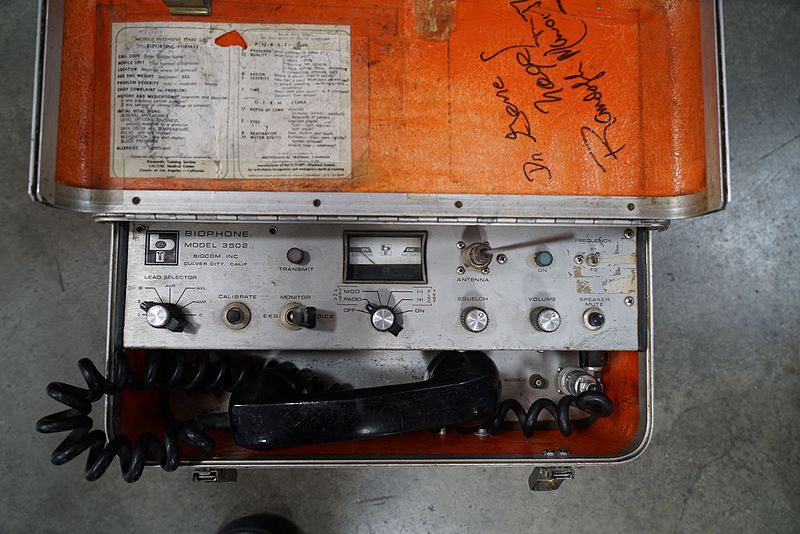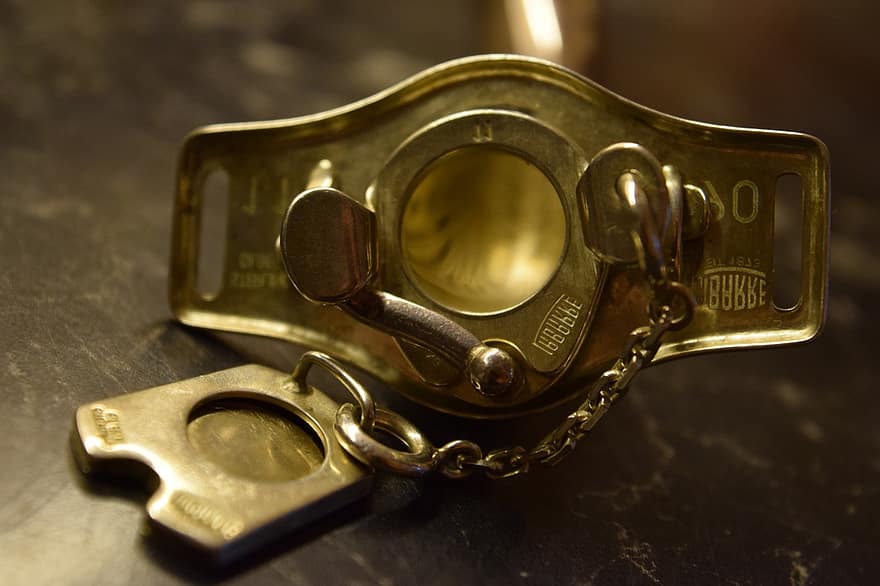This is still included in the A of ABCs but I got essentially no training on this in paramedic school. I honestly didn’t get much formal training on this after becoming an ED doc either. I just had to bug RTs and ICU docs to learn what I know now. Airway problems are terrifyring without an approach to solve them. But when you have an approach you can fall back on that with a calm confidence. It’s like we’ve always heard: we don’t rise to the occasion, we fall to the level of our training. And with trach’s, we unfortunately have to train ourselves.
What is a tracheostomy aka a trach?
- A tracheostomy is a hole in the neck that the patient will breathe through instead of their nose/mouth.
- It is different from a cric because it is lower down in the neck and typically done in non-emergency conditions
- A tracheostomy tube goes thru that hole
- “trach” is used interchangeably and informally to describe the hole and the tube
Why do people get trachs?
- The most common reason someone will have a trach is because they will require prolonged mechanical or assisted ventilation
- Other reasons include cancer or masses superior to the trach. These patients don’t necessarily need mechanical ventilation for they can’t move air passed the tumor or malignancy that is superior to the trach.
- Of course there will always be other reasons you see trach’d patients in your career but the above principles will cover the vast majority of trach patients
The Tracheostomy Tube
Trach tubes are the same idea as ETT we use to intubate people — they are just modified for long term use and the shorter distance from the base of the neck to just above the carina
- Trachs can have an inner and outer canula. Both are hollow tubes. All tracheostomy tubes have an outer cannula. Most have an inner—the exception is usually pediatrics
- The inner cannula inserts into the outer cannula and is removable and can be cleaned or replaced as often as needed.
- The outer cannula stays in the tracheostomy (the hole in the neck) at all times and stents the hole open. The outer cannula is changed far less frequently than the inner cannula.
- The plastic ring on the outside of the cannula usually tells you the size and type of trach the patient has
- While the inner cannula is removed, the patient can still breath through the outer cannula.
- Some trach tubes are cuffed and have a pilot balloon for inflation just like our ETT. The pilot balloon will tell you how many mL’s the balloon should be inflated
- Trachs also have an obturator. This is equivalent to the stilet used when intubating someone. It is used for insertion of a new trach unit.
The WTF approach:
If you are freaking out and can’t remember what that annoying dude from Denver said this is our WTF approach:
- Suction the trach or the trach hole if the tube fell out
- Then connect a BVM to the trach tube or use a pediatric mask to literally bag the hole in their neck.
- Once you’re bagging, get them on the pulse ox and call medical control to ask if you should replace the trach, intubate from above, or put a 6.0 ETT in the hole.
What are the complications of a tracheostomy?
The most common complications to expect can be broken up by how old is the tracheostomy.
- < 3 weeks
- tube dislodgment or obstruction
- infection
- hemorrhage
- PTX
- > 3 weeks
- Tracheal stenosis or tracheal malacia (granulation tissue)
- Tube dislodgement or obstruction
- Equipment failure
- Tracheoinnominate artery fistula — BAD — a connection forms between the trachea and the innominate artery (essentially the aortic arch)
- Tracheoesophageal fistula — BAD — a connection forms between the windpipe (trachea) and the food pipe (esophagus). This leads to recurrent aspirations and severe infections.
- Infection—pneumonia, aspiration
One step further:
It is important to differentiate between tracheostomy vs laryngectomy. A laryngectomy is a very complicated procedure and the only way to ventilate our patient is through the stoma aka the hole in the neck. Notice our WTF approach will not fail us here. THESE PATIENTS CAN NOT BE ORALLY INTUBATED.
What is our general approach to the trach’d patient?
- General Approach = ABC and WHAT WHEN WHY
- Airway – is the problem they called 911 for an airway problem, in other words, a problem with the trach
- Breathing – is the problem they called 911 for a problem related to the lungs like a pneumonia — and the trach is working fine
- Circulation – is the problem they called 911 for a bleeding problem with anything from oozing around the trach to blood shooting out of the trach and the patient being in hemorrhagic shock.
- WHAT kind of trach is it?
- WHEN was it first placed or how old is the trach hole
- WHY did they need the trach in the first place?
- The best person to ask about the trach is the patient’s caregiver/parents/partner.
- My first question to the family or caregiver of a patient with a tracheostomy problem is “what do you think is going on”
- Airway
- If the patient is on a vent, the first step is always to disconnect them and see how they ventilate and oxygenate with a bag valve mask
- Next assure there isn’t an obstruction
- suction the accessible areas of the trach and place on high flow O2 or bag the patient
- If the patient is still difficult to bag or there is frank obstruction, call medical control to discuss intubating from above (orotracheal intubation) or replacing the tracheostomy with a 6.0 tube vs rapid transport and BVM
- the WHY and WHEN are so important here.
- WHEN- A trach less than 7 days old is extremely high risk and passing anything into it is almost never indicated in the emergency room let alone the field. The solution here is to either bag over the stoma or attempt orotracheal intubation
- WHY- If the patient has the trach because they have a giant epiglottic mass or a laryngectomy, intubating from above is not an option.
- the WHY and WHEN are so important here.
- Decannulation
- In other words, the trach fell out
- you can place high flow O2 over the skin hole or use a pediatric mask with a BVM to create a seal around the trach hole and ventilate the patient while you are calling medical control for advice on whether to attempt replacing the original trach device, intubating from above, or passing an ETT into the tracheostomy
- Again, the What ,When, Why are so important to know when calling medical control
- Breathing
- These patients are very susceptible to pneumonias and skin infections
- As long as you are able to ventilate easily (e.g. bag them easily) and oxygenate (90% or greater), routine transport is ok
- Circulation
- Bleeding
- minimal and able to ventilate (bag easy) and oxygenate (SpO2 > 89%) well, transport and give the receiving ED a heads up
- Massive bleeding
- Concern is for a tracheoinnominate fistula. This occurs when pressure from the trach ballon causes erosion of the soft tissue overlying the innominate artery with subsequent fistula formation.
- Treat this like a trauma (like a GSW to the neck) –
- Load and GO
- Two large bore IVs
- Notify the receiving facility early
- You can attempt to over inflate the cuff- which may put pressure on the artery and serve to tamponade
- If over inflating the cuff fails to control bleeding:
- Advance an cuffed ETT tube deeper into the trachea (or intubate from above)
- Then place your finger in the hole hooked downward like you are pointing at the heart and try to compress the vessel against the sternum
- Bleeding
- Special consideration for Peds
- The parents will know more than any of us about their child’s disease process, equipment, and how to troubleshoot anything.
- Ask the parents what hospital they prefer and do your best to make this your destination within the limits of your organizations protocols.
- If the parents seem overwhelmed or don’t have a lot of helpful information, the same principles we talked about apply to kids
- Do not let your ego get in the way of you asking the parents what you should do.
Summary:
ABC—WHAT WHEN WHY. Suction the trach and/or the hole. Use 100% O2 and bag the trach tube like it’s an ETT or place a pediatric mask over the hole in the neck if it fell out. Try to figure out what kind of trach it is, when it was placed, and why they needed it. CALL CALL CALL med control if you’re worried.
Final take home point 1:
If the trach tube fell out and the caregiver didn’t or couldn’t replace it, call for help to discuss intubating from above, replacing the trach tube itself, or placing a 6.0 ETT in the hole. It is also totally reasonable to bag the hole with peds mask and transport.
Take home point 2:
Once you listen to this podcast and review the equipment of a trach, the rest is everything you already knew. You know what hemorrhagic shock is and how to deal with it. You know what sepsis is and how to deal with it. You know what airway obstruction is and now you know how to troubleshoot this very specific type of airway obstruction.
Take home point 3:
Massive hemorrhage related to a trach is rare but almost always fatal. The most important thing you can do is load and go. We talk about some advanced maneuvers like overinflating the balloon and putting a finger in the hole but this is only after you have loaded and left and established two big IVs.





